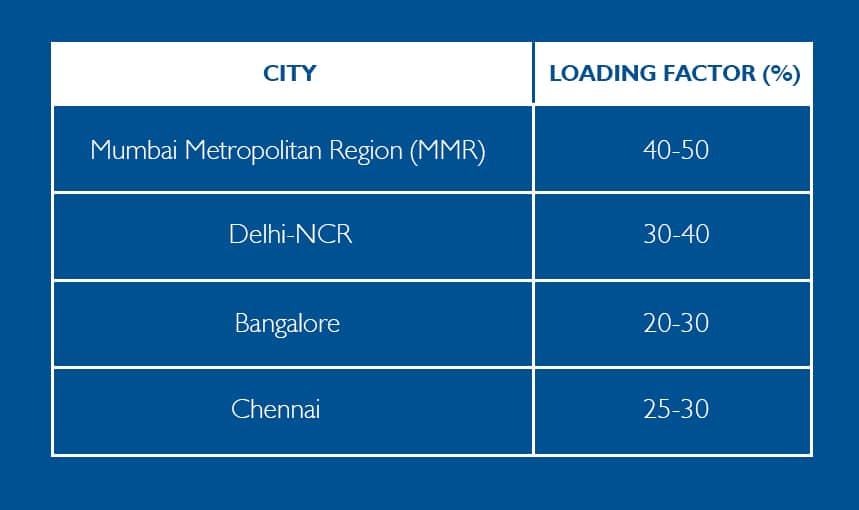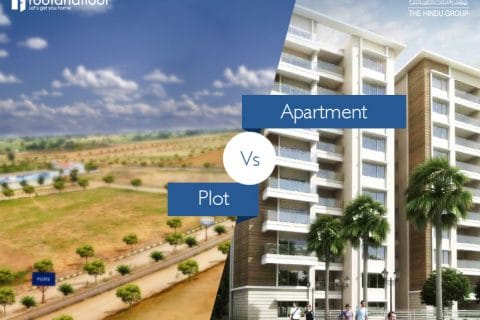Buying a house can often lead to a crash course in real estate. The carpet area, built-up area, and loading factor – the list goes on!
Without a proper understanding of these real estate jargons, you may end up feeling frustrated in your search. Since we have already explained you about the carpet and super built-up area in this article.
What is loading factor?
In simple words, the difference between the super built-up area and the carpet area is called loading. It can be calculated by a simple formula:
Carpet area X (1- loading factor) = super built-up area.
Let’s assume, the super built-up area of an apartment is 1,200 sq. ft. and the carpet area is 1,000 sq. ft.
1,000 X (1-loading factor) = 1,200
1- loading factor = 1,200/1,000
1- loading factor = 1.2
Loading factor = 1.2 – 1
So, the answer is 0.2 or 20%. As a standard, It is always in percentage.
Why is it relevant?
It is essentially for builders to recover the cost of the facilities/amenities provided in the project. These include lifts, lobby, maintenance room, parking, and terrace, to name a few.
What is the loading pattern in cities across India?

From the above table, it is clearly evident that loading percentage in markets driven by end-users is lower (Bangalore and Chennai) when compared to the markets that are largely speculative in nature.
In what scenarios does the percentage of loading increases?
The loading factor is directly proportional to the amenities in a project. Thus, the cost of additional premium amenities provided by the developer is usually passed on to the customers in the form of loading charges.
Can it be reduced?
Well, not really! However, it is low for smaller projects. For the plots allocated by the government is zero.
What is the ideal loading factor?
In an ideal scenario, For an apartment should be below 30%. Anything above that indicates that the carpet area is less while the super built-up area is more. This might leave buyers with smaller space inside their homes.
RERA effect!
Gone are the days when developers used to just disclose the super built-up area of an apartment for making a stronger selling point. With RERA in place, it is now mandatory for developers to disclose the carpet area of all the units on their websites as well as brochures.
While most of the developers do not mention the loading factor of an apartment in their brochures or websites, it is important to know this term to gauge the real value of your investment!






